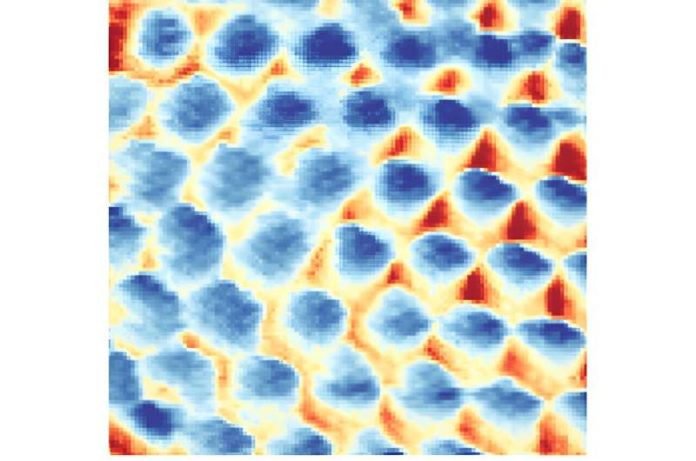
Electrons, those tiny particles that whirl around the center of atoms, have been studied by scientists for over a hundred years.
Yet, they still hold secrets that can surprise us.
Recently, a group of physicists from Princeton University made an exciting discovery about electrons. They managed to get the first-ever direct look at something called a Wigner crystal. This is a special type of matter made up entirely of electrons.
Published in the journal Nature, this discovery confirms an old theory that has been around for 90 years. The theory suggested that electrons could organize themselves into a crystal-like pattern without needing to attach to atoms.
This research could open the door to finding new kinds of matter that come into existence when electrons work together.
The idea of a Wigner crystal comes from Eugene Wigner, a physics professor at Princeton and Nobel Prize winner.
In the 1930s, he came up with the groundbreaking idea that electrons could arrange themselves into a tight formation due to their natural push away from each other, especially under very cold conditions and when they are not too crowded.
Al Yazdani, a leading physicist at Princeton, explained that when we think of crystals, we usually imagine atoms coming together because they attract each other.
But the Wigner crystal is different because it forms solely from the repulsion or the push away between electrons.
For many years, this idea of an electron crystal was just a theory. It wasn’t until much later, through several experiments, that scientists began to see this theory could be real.
In the 1970s, experiments with electrons sprayed on a helium surface showed they could act rigidly, like a crystal, but these were still far from the true Wigner crystals Wigner had imagined, which would follow quantum physics rules rather than classical physics rules.
Scientists kept experimenting, especially in the 1980s and 1990s, using semiconductors to trap electrons in thin layers, which helped create conditions for these crystals to form.
However, seeing these crystals directly was a challenge. They could only guess their existence from the way electrons moved through the materials.
Yazdani pointed out that previous research might have mistaken other effects for the Wigner crystal because of imperfections in the materials used.
To avoid this, his team used a very clean sample of graphene, a form of carbon discovered in the 21st century, known for its exceptional properties for quantum experiments.
The researchers cooled their graphene to near absolute zero and applied a magnetic field, which allowed them to control the density of electrons and observe how they behaved.
They found that as they increased the density, the electrons, initially scattered, began to push against each other and formed a neat, ordered pattern, like a crystal. Then, if they increased the density further, the crystal structure would dissolve into a liquid-like state.
This experiment showed, for the first time, direct images of the Wigner crystal, proving its existence. The images revealed that the crystal was triangular and stable over a wide range of conditions, challenging previous assumptions about its stability.
Moreover, the experiment unveiled some intriguing properties of the crystal. For example, the electrons appeared a bit blurry in the images, suggesting they were not stuck in one spot but moved within a small area.
This movement is a quantum effect, indicating that even in a solid crystal form, electrons retain some of their wavy, uncertain nature.
This breakthrough not only confirms a long-standing theory but also opens up new paths for exploring other mysterious states of matter where electrons behave in unusual, collective ways.
The team at Princeton is excited to continue their work, hoping to uncover more about the unique properties of electron crystals and the various phases of matter they might lead to.
The research findings can be found in Nature.
Copyright © 2024 Knowridge Science Report. All rights reserved.



